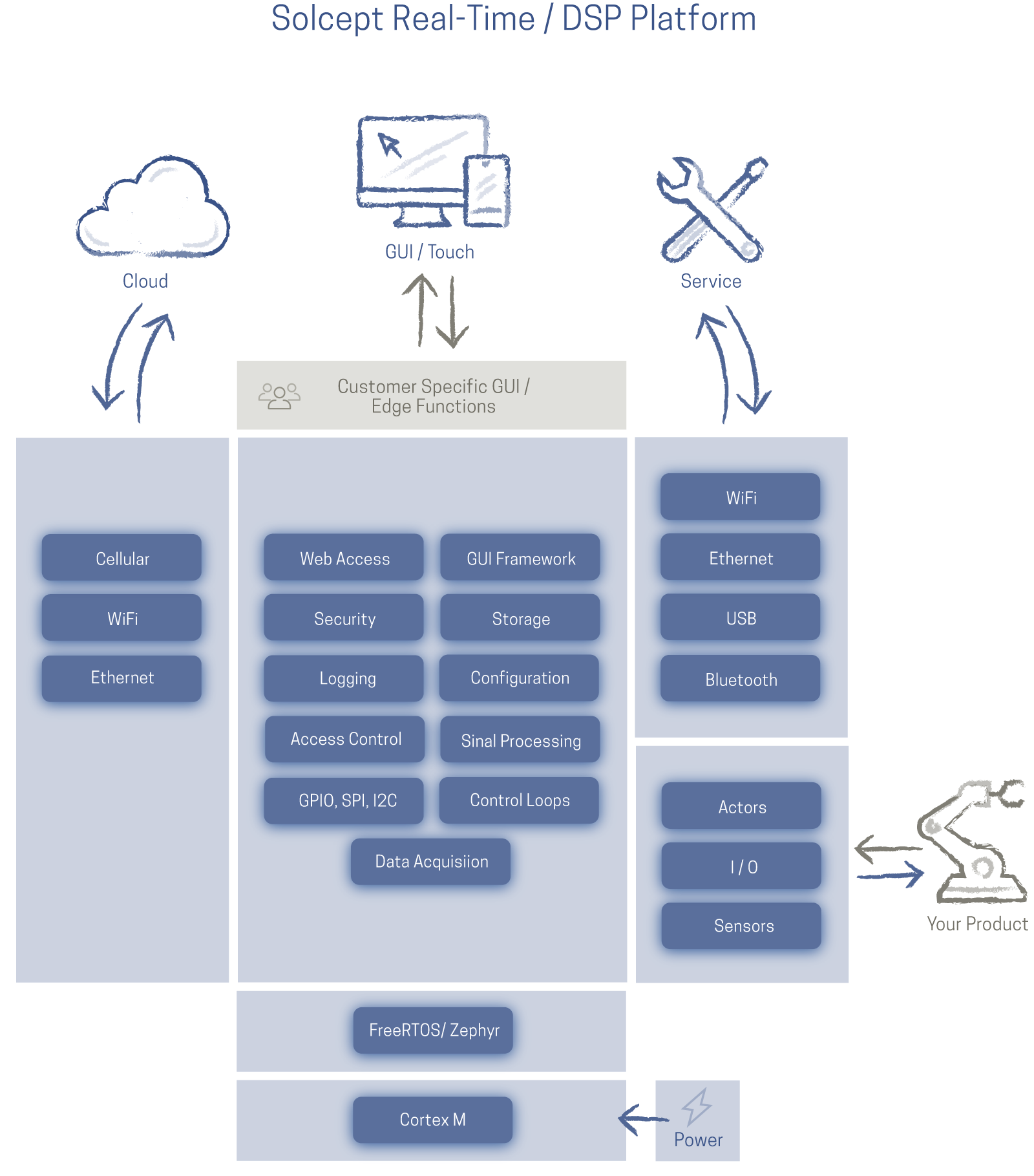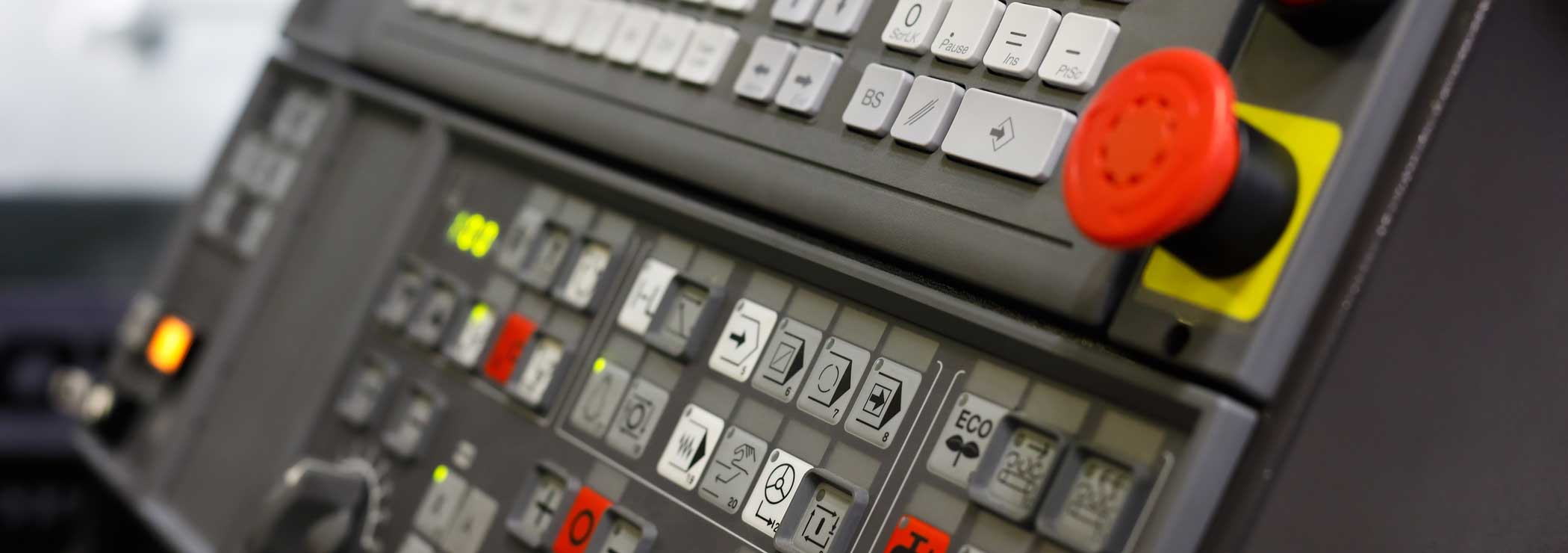
Functionality of the Standard Design
The platform offers these options (see also the drawing above: blue part):
- Communication with user
- via a local user interface
- LCD/ OLED display up to 800 x 600 pixel resolution
- touch
- with smartphone, tablet or laptop
- USB
- WLAN/ Bluetooth
- maintenance
- communication with e.g. service
- service interface incl. service tool
- remote maintenance
- via any interface, e.g. with MQTT
- communication with e.g. service
- communication with the internet/cloud
- Fast Ethernet
- Wireless LAN
- via a local user interface
- Application framework
- infrastructure framework for modular and maintainable applications
- automatic generation of protocol code
- Data storage
- device configuration, event log...
The non-functional requirements that the design fulfills are also important. These are often the larger limitation than the functional aspects:
- Data security
- built-in hardware secure element (Root of Trust)
- secure processor/ system on chip
- secure certificate and key store
- encryption
- identification
- Secure software update via the Internet
- Industrial quality
- temperature range -40..+85 °C
- long product lifetime (long-term availability)
- EMC and radio certification
- developed according to Solcept processes (CMMI for Development (Maturity Level 3), ISO 9001)
Your Application
The specific application (developed in C/ C++) can include, but is not limited to:
- Operator interface
- local operating interface
- GUI development based on the platform framework
- e.g. automatic generation of menu trees
- GUI development based on the platform framework
- local operating interface
- Analysis and signal processing of sensors
- position (satellite navigation)
- temperature, humidity, air quality
- position in space, attitude, distance
- vibrations, acceleration, forces, weight
- current, voltage measurements
- Control of actuators
- switching of (resistive) loads
- stepper, DC, BLDC motor
- Any control function
Technology Base
This Standard System Design is based on the following technologies:
- Microcontroller
- ARM Cortex-M
- Operating system
- Display
- LVDS
- Security
- unique ID
- cryptography unit
- external Secure Element
- Interfaces & protocols
- Wired
- Profinet, EtherCAT, Profibus
- CAN, LIN, IOlink
- Wireless
- WLAN (Wireless Local Area Network)/ Wi-Fi
- Bluetooth Classic, Bluetooth Low Energy (BLE)
- Near Field Communication (NFC)
- "IoT/ IIoT"
- MQTT (Message Queuing Telemetry Transport)
- AMQP (Advanced Message Queuing Protocol)
- CoAP (Constrained Application Protocol)
- Towards sensors, actors...
- USB, UART
- SPI, I2C
- ADC, DAC
- current/ voltage interfaces
- Wired
